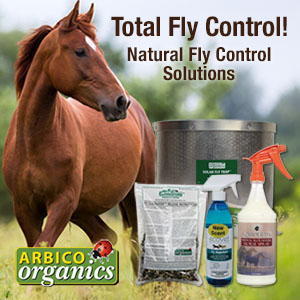
To a dog, loud noises can be a nightmare of fear. Many dogs are tragically scared by thunderstorms. Similar fears develop to other noises such as fireworks, cap guns, whips, and gunshots, nailing guns and many other loud noises. When scared by noises, dogs will do all they can to either get comfort, or to escape the noise. They will seek to come inside the house and your comfort may be all they need, but what if the dog is left alone when a storm or similar noise strikes? Such dogs are at grave risk. Even if your dog does not attempt to escape, you may find its fear of noises very difficult to control.
Progressive Desensitization
Progressive Desensitization is the best answer to a dog’s phobia of noises. With this a dog’s fear of noises is reduced and replaced with tranquil, accepting, even joyful, behavior. It is not an easy process though, and sometimes it won’t work, but it is certainly worth a good try. For this, you need a ‘controllable’ noise, where the volume of the noise can be reduced or increased. For storms, recorded sound effects of real storms are sometimes effective. For fears of explosions, devious accessories such as cap guns and exploding balloons can be used. The difficulty is that there is a limit to how closely a recorded storm mimics the real thing because a storm is more than just noise.
Storm recordings are available on a variety of sound effects CDs and online. Choose one with good thunderclaps, lightning roars, rain squalls, explosions, and similar noises. Play the recording back at full volume to ensure it induces the same degree of fear as a real storm. If this is not so, then another solution needs to be found. The better your sound equipment the more likely you are to have the desired effect. If the recording causes as much trembling and anxiety as the real thing, then you can proceed.
The Happy Mat Routine
The first step has nothing to do with the recording. All you need to do is to establish a new routine for your dog in which you train it to be happy and content about being on a mat, in front of your stereo. Put your dog on the mat. Command it to do a simple task such as to ‘Sit’ or to lie ‘Down’. If your dog responds, feed it a tasty food reward, and praise it. Really overemphasize the praise to ensure your dog is happy. Rub its chest and give it pats. Make its tail wag enthusiastically. This is called the ‘Jolly Routine’.
Repeat this Sit/Down/Praise routine many times each day for five days. After this time, your dog will look forward to its special time on the mat, in front of your stereo. Now introduce the recorded storm, but at a very low volume. Continue the Jolly Routine by giving your dog chest rubs and back scratches with the storm at this low volume. If your dog accepts this level of noise, then gradually increase the volume over successive days. Eventually the dog will tolerate a full volume, canned storm.
Ensure Your Dog is Safe
Another important matter is to ensure your dog’s safety during a storm. Don’t treat a dog’s fear of storms lightly. If you are leaving your dog and a storm is likely, you are better confining your dog to a secure room from which it cannot escape. The process used to do this is called the ‘Denning Principle.’
The Pace and Praise Technique
What can you do when your dog is scared in the middle of a storm? The most important matter is to ensure that you are not compounding its fear. Don’t try to comfort the dog by patting it or cuddling it. This only serves to teach the dog that fear is the behavior you expect in a storm. The behavior you want is rationale, sensible, calm behavior. Achieve this by moving the dog from the emotional ‘right side’ of its brain to the logical ‘left side’. This is done with the ‘Pace and Praise’ technique. Place your dog on a lead and start to pace or move about quickly. Encourage your dog to ‘Heel’ with you. Give it some firm commands such as ‘Sit’ or ‘Down’ and ‘tick’ your dog’s correct response with immediate praise. Keep working with the dog until you can see that it is starting to respond and that it is focusing more on you than on the storm. As it comes back into order, start leaving more space between the command and the ‘tick’ of praise that follows. It is unlikely that your paranoid pooch will be totally calm, but at least this technique should make it controllable. Repeat the Pace and Praise technique if your dog again goes starts to show high levels of anxiety again.
Medication for Noise Fears
With noise fears, the sensible use of anti-anxiety medication is often a good idea and is often essential to stop a dog from injuring itself. For further information, contact your veterinarian. Remember that noise fears can be serious – keep your dog safe during a storm or fireworks at all costs.
Provided by Dr. Cam Day BVSc, Animal Behavior Consultant
Related Articles & Free Email Newsletter
6 Steps to Use When Introducing a Cat to a Dog




Comment here